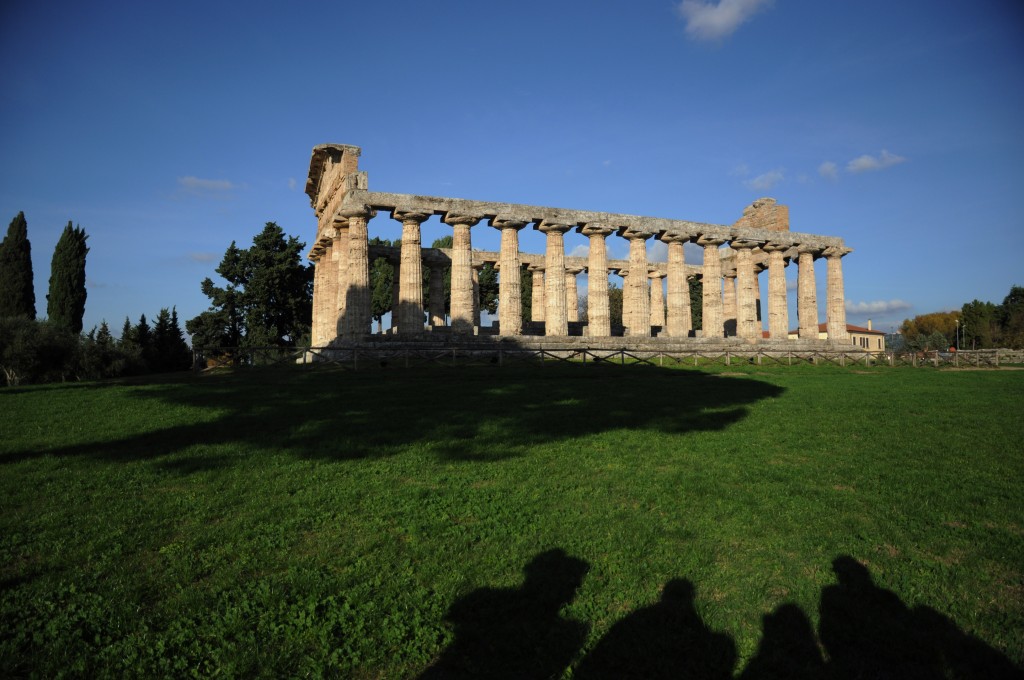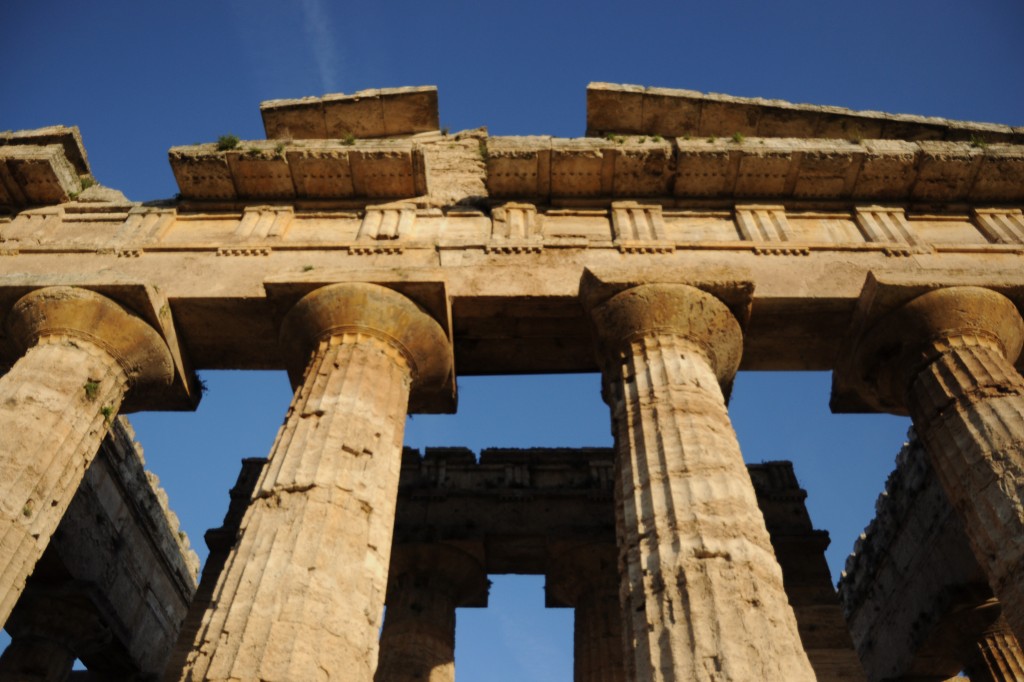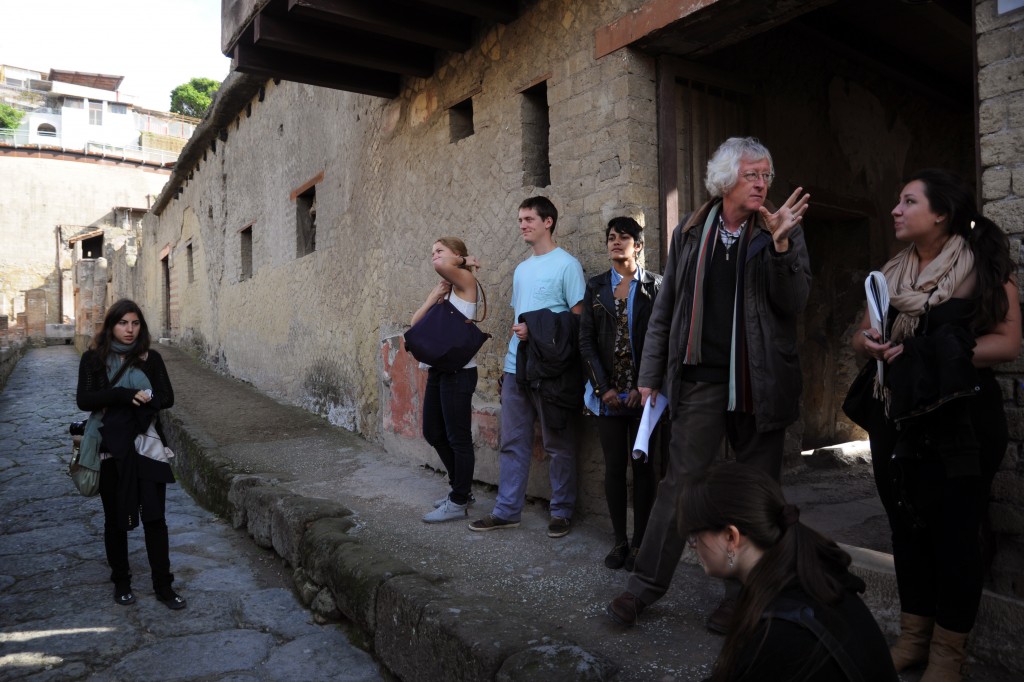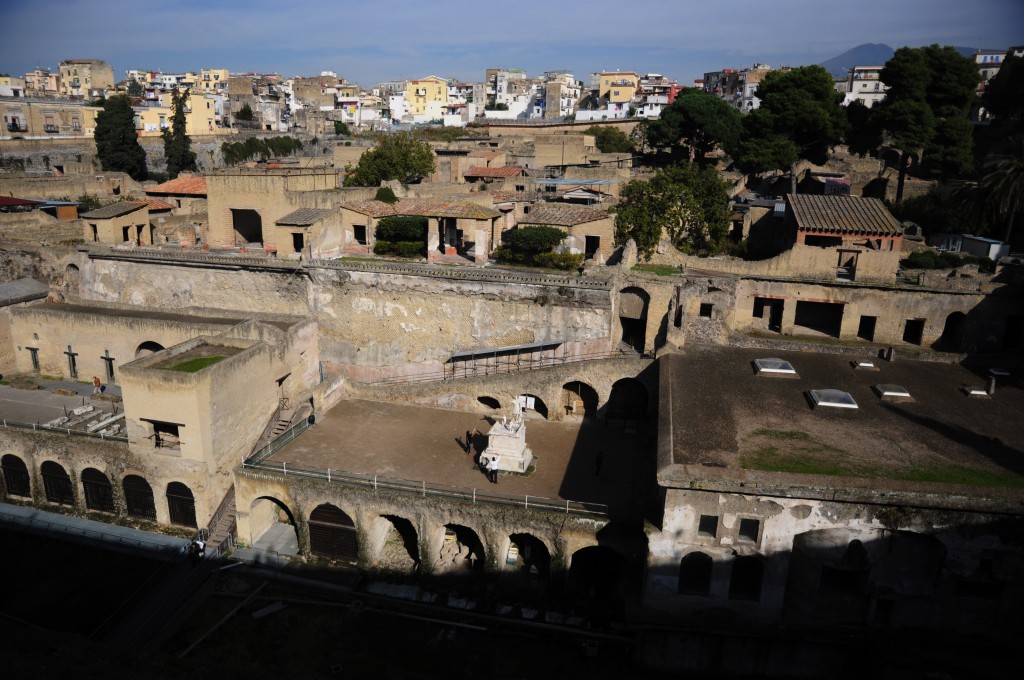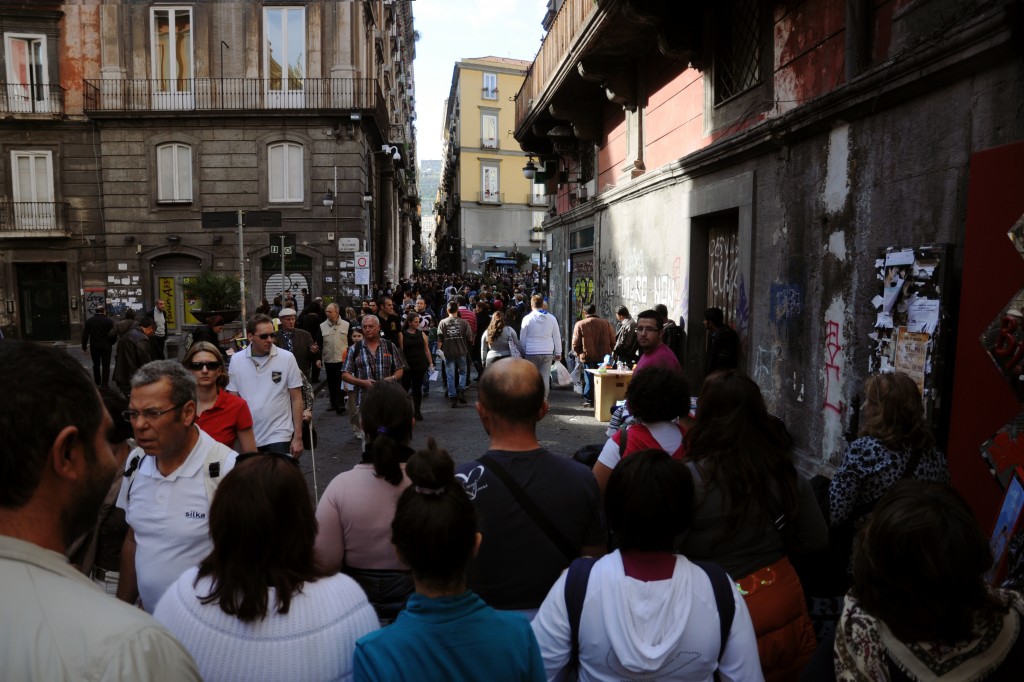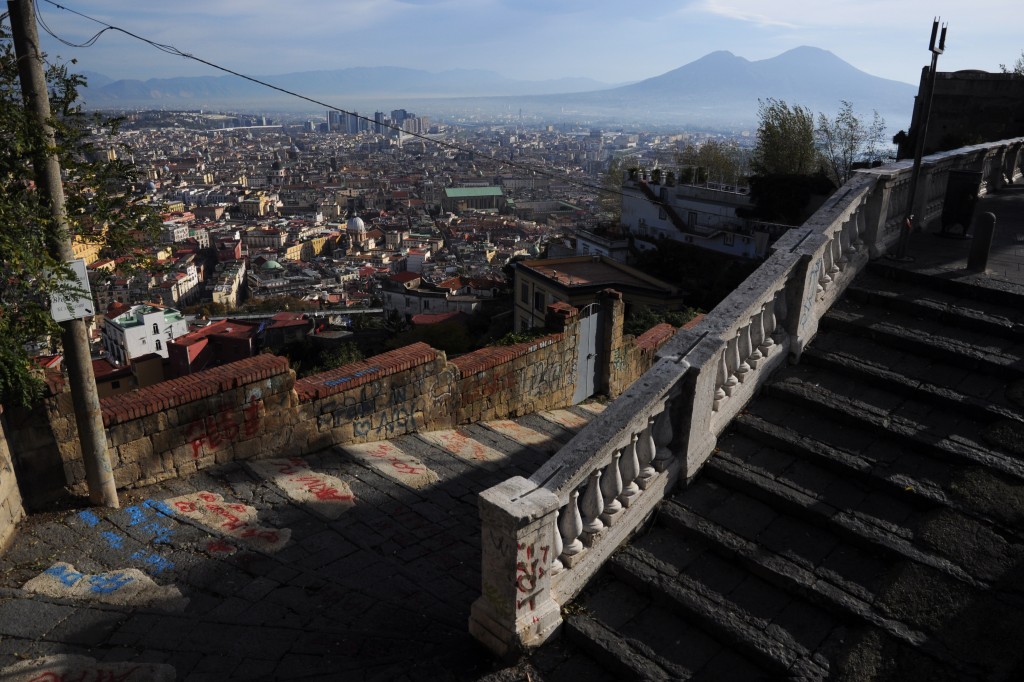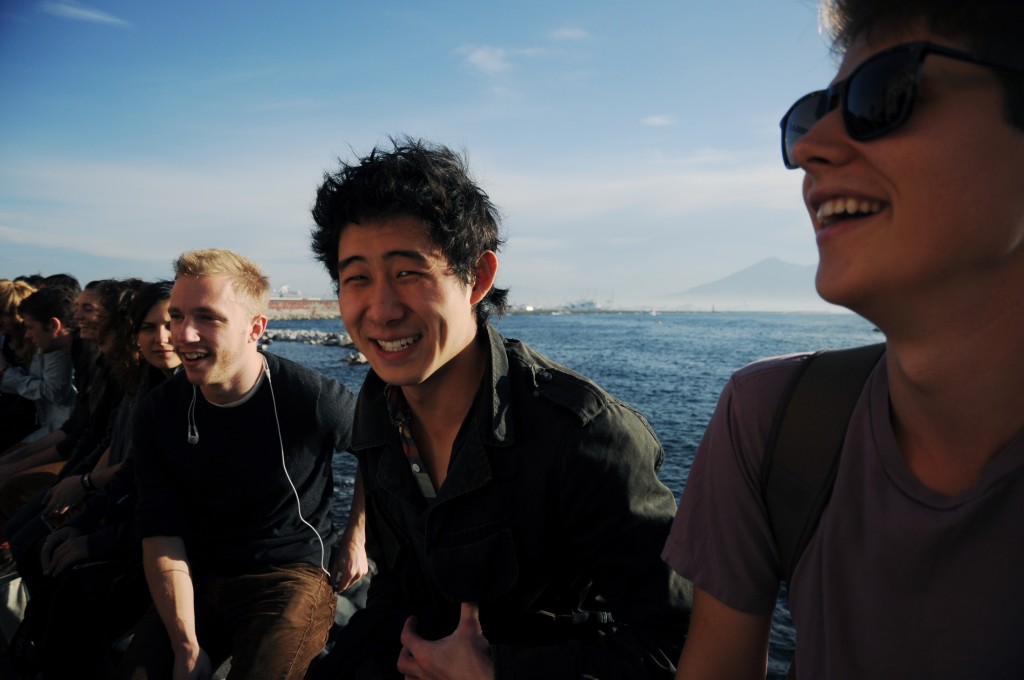This past weekend we went on our last overnight field trip, visiting Paestum, Herculaneum, and Naples. Paestum is a small town famous for its three ancient Greek temples, which are well preserved and beautiful. That night, we had a bonfire on the beach next to our quaint hotel and a few of us even went swimming. Although it was a cool night, it felt like summer again. It was great to forget about the busy final month ahead of us and enjoy the quiet town.
The next morning, professor Jan Gadeyne met us in the ancient city of Herculaneum, which was simultaneously destroyed and preserved when Mount Vesuvius erupted in 79 AD. The same eruption also famously destroyed Pompeii. Although the two cities are close, the damage to Pompeii and Herculaneum is very different. Pompeii was downwind of Vesuvius and was first covered with a cloud of volcanic dust which caused more of the structures to collapse, while Herculaneum was covered only with lava, so the majority of its structures are very well preserved. In some cases even the original wood beams and shutters, although charred, remain. So far, only a quarter of the ancient city has been excavated. The rest is covered with modern apartments, which look right into one of the most famous archaeological sites in the world.
Naples was the highlight of the trip for me. It was busy and dirty, but wonderful. I fell in love with its liveliness and vibrant people. It is a city notorious for its talented thieves, but our group must have looked self-aware enough (or was lucky enough) to not have any bad luck with criminals. In fact, our only brush with the law was the fault of one of our own — more about that later. As part of our tour we walked along Via San Gregorio Armeno, which is lined with Christmas nativity scene workshops. It was so busy that it took us 15 minutes to walk two blocks. Usually, I would consider this a terrible experience, but somehow I didn’t mind neither the crowds nor the dirt. Both are such an essential part of the city’s character that they make it more interesting instead of marring it.
We visited MADRE, the Museo d’Arte contemporanea DonnaREgina. It was here that misfortune struck. The museum has a comparatively small but high quality collection of installation art. One piece is the work of Anish Kapoor, an Indian-born British sculptor whom I admire. Before realising that the museum had one of his pieces, however, I walked into a room containing what seemed to be a square black cloth lying on the ground. Upon seeing me, my friend Nick decided to demonstrate that the “cloth” was in fact a deep hole by throwing a coin into it. In his defense, I later saw that the hole was lined with coins from people who had the same idea before him. Before I could even react, however, a young female security guard shouted in Italian and ran out of the room to call the police. Nick spent the next hour avoiding both the police and our professor Jeffrey Blanchard within the maze of the museum, but he finally had to come out of hiding when it was time for us to leave. Naples will forever have a police report with his signature on it, but in return Nick will always have the story of how he defaced an Anish Kapoor and almost got arrested.

